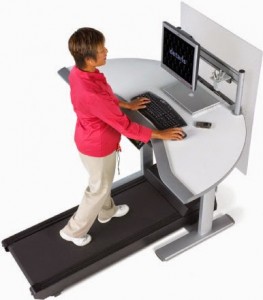Keeping track of your daily step count is crucial if you want to reduce the risk of early death and increase your longevity.
Do not assume that you’re already getting in “plenty of walking” each day. You’d be surprised at how deceptive this can be without some kind of objective tracking.
It doesn’t matter when the steps are taken, in that EVERY STEP counts towards your total daily step amount.
The question is this: What is the minimal number of steps every day, after which, an increase in longevity is associated?
Or, to put it another way, what number of steps a day or less is associated with higher mortality?
According to a study published in the Journal of the American Medical Association (March 24, 2020), the cutoff number is 4,000.
What makes this study of particular interest is that the sample of people was a fair representation of U.S. men and women, rather than (as with previous step studies) primarily older subjects or those with chronic medical conditions.
How were the subjects’ daily steps recorded?
The 4,800 subjects wore an accelerometer for up to seven days between the year 2003 and 2006.
Their death rates were followed through to 2015 by the National Death Index.
The link between death and number of daily steps was calculated after adjustments were made for body mass index, health of the participants and behavioral risk factors.
The Cutoff of 4,000 Steps a Day
The 4,000 daily step total was the reference point. The study found that 8,000 steps a day, compared to 4,000, was tied to a 51 percent lower risk of all-cause mortality.
A daily total of 12,000 steps was linked to a 65 percent reduced risk.
The study authors note, however, that these findings are associations and don’t show cause and effect.
Nevertheless, common sense dictates that replacing a lot of sitting time with stepping time provides health benefits.
Here are ways to get more than 4,000 steps a day.
Pace While Watching TV
I’ve found that pacing forward several steps and back several steps accumulates between 750 and 950 steps per 15 minutes, depending on speed.
Count your steps while pacing forward and back, or side to side (whichever you prefer while watching TV) for 15 minutes.
This way, if you pace while watching TV for, say, 30 minutes, you can simply multiply your previously recorded step total by two.
I’ve paced forward and back literally for one hour while watching TV, getting in between 3,000 and 3,800 steps (depending on if I choose my slower pace or faster pace). If you’re engrossed in a TV show, that hour can go by quickly.
Treadmill Desk
Another easy way to amass daily steps is to buy a treadmill desk and do some of your computer work on it.

Better yet, if possible, situate a regular treadmill before your TV.
Even a walk of just 0.7 mph will generate about 3,300 steps per hour.
Count how many steps you take at this speed for one minute (this will slightly vary from one person to the next), then multiply by however many minutes you spent walking while watching TV or using a computer.
According to my personal calculation, if I walk just 1 mph for two, 30-minute segments, I will get in 3,720 steps.
Why not just use a pedometer?
Yes, use a pedometer, if you can find one that’s accurate.
I’ve tried three and found that they don’t accurately capture steps, if at all, over short distances such as foot movement in the kitchen or walking a short distance in a room.
But even if you wear a super accurate pedometer, this is no guarantee you’ll get over 4,000 steps!
You could have the most accurate pedometer in the world and still not be hitting at least 5,000 steps a day.
The above-mentioned tricks will help you reach your daily step quota and provide health benefits.



























